Accessible autumn – experience one of most magical times of the year in South Downs National Park
October 13, 2023
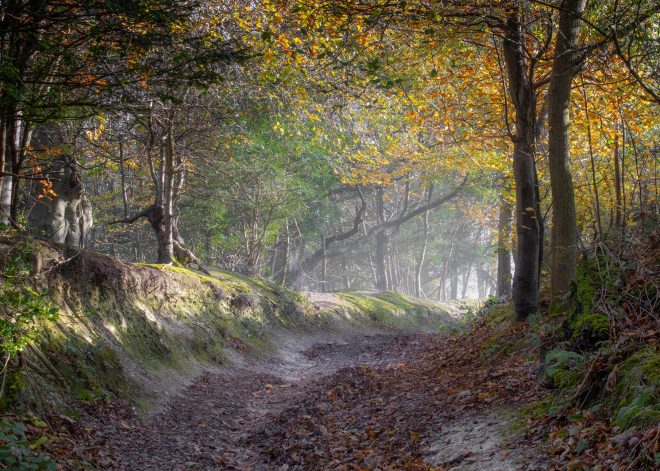
“Delicious autumn! My very soul is wedded to it, and if I were a bird I would fly about the Earth seeking the successive autumns.”
The famous writer George Eliot knew there was something very special about autumn and many would agree it’s one of the best times of the year to see the South Downs National Park.
It’s a season of morning mists and sensational sunsets, where a stroll with crunchy leaves underfoot followed by a hot chocolate can bring a warming sense of comfort and reflection that only the “fall” season can inspire.
With a quarter of the National Park covered in woodland – a bigger area than any other National Park in England – there’s plenty of leaves to change colour and eventually fall. Did you know that the phrase “fall of the leaf” was very common up until the 17th century and the French “automne” only became common in the 18th century?
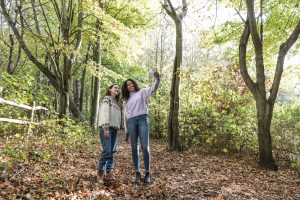
Those looking to explore the wonders of autumn will find one of the most accessible protected landscapes in the UK. With over 3,600km of Rights of Way (2,200 miles…around the same distance from here to Cyprus!), the famous 100-mile long South Downs Way, and a large network of railway and bus connections across market towns and chocolate-box villages, you can experience tranquil nature while only being a stone’s throw from a pub or shop.
Andy Gattiker, who leads access in the National Park, said: “Autumn is such a wonderful time to explore the South Downs, especially the later sunrises and earlier sunsets which mean the ‘golden hour’ for photography often occurs when you’re out and about on a walk.
“The tree cover in the National Park is about the same size as the Isle of Wight, so you’re never far away from a lovely woodland walk to see all the vibrant shades of yellow, red and orange in the treescape.
“Not everyone loves mud and negotiating stiles, so autumn is a good time to try out one of our Miles Without Stiles routes. There’s seven across the National Park and they are gentle walks on solid ground that the whole family can enjoy, regardless of their fitness or mobility levels. We also have off-road mobility scooters for hire at Queen Elizabeth Country Park and Seven Sisters Country Park.
“We hope people enjoy experiencing the autumnal magic of this treasured landscape!”
Here are some of Andy’s ideas for a great day-out this autumn in the South Downs National Park:
Try a Miles Without Stiles walk
Miles Without Stiles are routes that are suitable for people with limited mobility. Wheelchair users, families with pushchairs, dog walkers and less agile walkers can choose from a list of routes from across the South Downs.
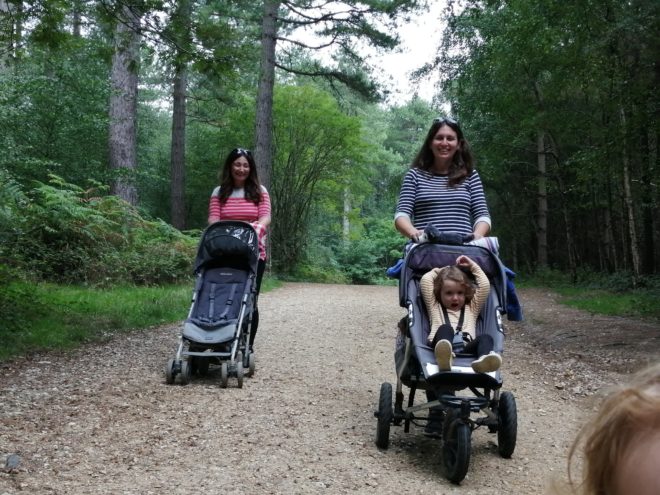
Whether it’s a cosy coastal view you’re after, or an enchanting forest, there’s something for everyone:
- Bramber Routes
- Ditchling Beacon and the Chattri
- Iping and Stedham Commons
- Seaford Head routes
- Seven Sisters routes
- Mill Hill route
- West Walk, Forest of Bere
Search for some spooky surprises
With humans inhabiting the South Downs for five millennia, it’s no wonder this rolling landscape is a swirling cauldron of myths, legends, folklore and ghost stories.
There are a few spots that are particularly spooky. Chanctonbury Ring, Devil’s Dyke, Racton Ruins, the Devil’s Humps of Kingley Vale – all are wrapped up in stories of mystery and intrigue. Add a morning mist, or an evening fog, and you have the perfect recipe for spookiness!
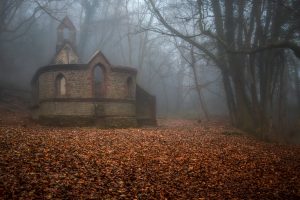
There’s an action-packed line-up of Halloween-inspired events throughout October at various venues across the National Park, including “Fearsome Folktales” at Butser Ancient Farm and an arts session at the Weald and Downland Living Museum exploring the ancient legend of Knucker, the Sussex Water Dragon. A “Science Spooktacular”, with a monster mini disco and trick or treat trail, will be running at Winchester Science Centre from 7 to 30 October. At Seven Sisters Country Park there will be the Errie the Owl’s Creepy Trail from 21 to 29 October. People can explore the Cuckmere River while learning about the eerie history and wildlife.
Throughout October, the National Park will also be running a “Spooky South Downs” photo competition on Instagram. Whether it be a spider’s web, a gnarly tree, a fearsome fungus or a castle shrouded in mist, people are being invited to share their spooky moments on the South Downs. The winner with the best image will receive a guided bat walk with Sussex Bat Group for up to four people. Simply snap away and #SpookySouthDowns. The deadline for entries is 31 October. Find out more here: www.southdowns.gov.uk/spookysouthdowns-photo-competition/
Embrace the darkness!
The South Downs National Park is one of only 21 International Dark Sky Reserves in the world – chosen because it has some of the best views of the starry night skies in the whole of the UK.
With the nights drawing in, autumn is a wonderful time to connect with nature on its grandest scale – the universe itself. Just check the weather forecast, pack some warm blankets and a hot drink, and head to one of the National Park’s 10 Dark Sky Discovery Sites. You’ll be amazed at how many stars you can see with the naked eye – just make sure you pick a clear night!
If you’re feeling adventurous, why not have a go at astrophotography? The National Park’s astrophotography competition will launch in November and has some great cash prizes on offer. Watch this space for further details!
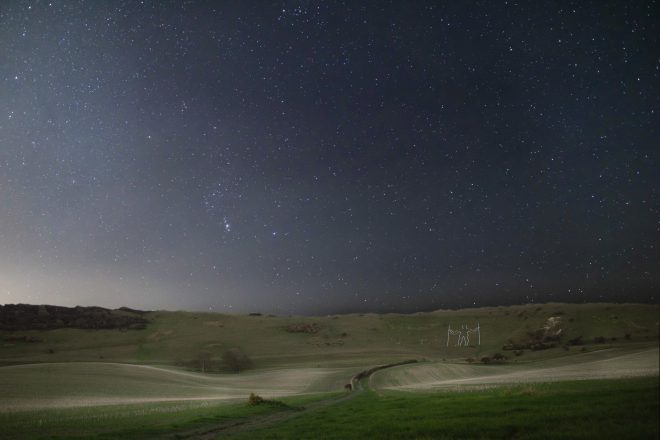
Forest bathing
We’re coming to the latter stages of a long year and all the rushing around to get things done (don’t even mention Christmas yet!) and the pressure of work targets are enough to make anyone feel a bit stressed! Why not enjoy a few hours of calmness and serenity by exploring one of the South Downs’ many woods and forests?
Studies have found that “forest bathing” (Shinrin-yoku) has positive physiological effects, such as blood pressure reduction, improved immune systems, as well as the psychological effects of alleviating depression and improving mental health.
Simply switch off your devices and immerse yourself in the sights, sounds, smells and feels of woodland nature. Here are some more tips for forest bathing: https://www.forestryengland.uk/blog/forest-bathing
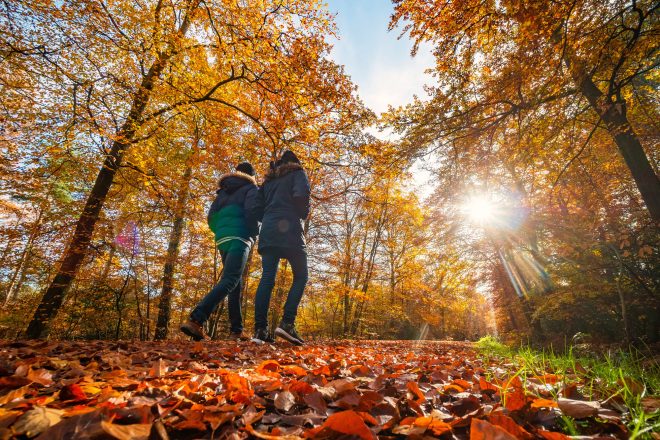
Look out for the weird and wonderful
Try looking for different coloured fungi on your walk.

Fungi like the damp conditions among the fallen leaves, which create a wonderful rich earthy smell in the forest. Remember they don’t all look like mushrooms and they don’t all grow on the ground – some grow on tree trunks or fallen branches. Fungi are essential to where they are found. They rot and recycle leaf litter, provide food for small animals and are great to admire. Remember to never pick and eat wild mushrooms unless they’ve been identified by an expert as they can be highly poisonous!
Did you know that trees and plants talk to each other through mushrooms? Most of a mushroom’s body is made up of thin threads underground. It’s recently been discovered that these threads link up, acting as a kind of underground internet, linking the roots of the trees and plants nearby and allowing them to share nutrients.
For more walking ideas this autumn check out the National Park’s brand new walking hub: www.southdowns.gov.uk/south-downs-walks/
